Two of my favorite things about Morocco are the tradition of handicrafts steeped into the culture and the food. Pottery, hand-woven carpets, woodworking, metalworking, basketweaving, zellige tilework, and leatherworking are just some of the traditional crafts in the souks. Tagines, pastilla, couscous, and mint tea are just a few of the local delicacies I could live on.
This post is dedicated to the afternoons we spent learning and creating during our 10-day tour. Many thanks to Melanie at Maison 28 for helping me choose these fabulous partners for our group.
If you’ve been to Marrakech, you already know. In case you haven’t been (yet), know that as intoxicating as Marrakech is, breaks are a necessity.
The first break from Marrakech took us to the Ourika Valley in the High Atlas Mountains to learn about traditional pottery production from Kahlid. First, Riad, our rockstar driver, walked us through the village to see how the red clay is excavated and dried in the sun.
Then, we were treated to an afternoon of learning in Khalid’s studio. He invited the group to use the wheel. Leslye, a former production potter, and Pam, a first-timer, took Khalid up on his offer to throw a pot.
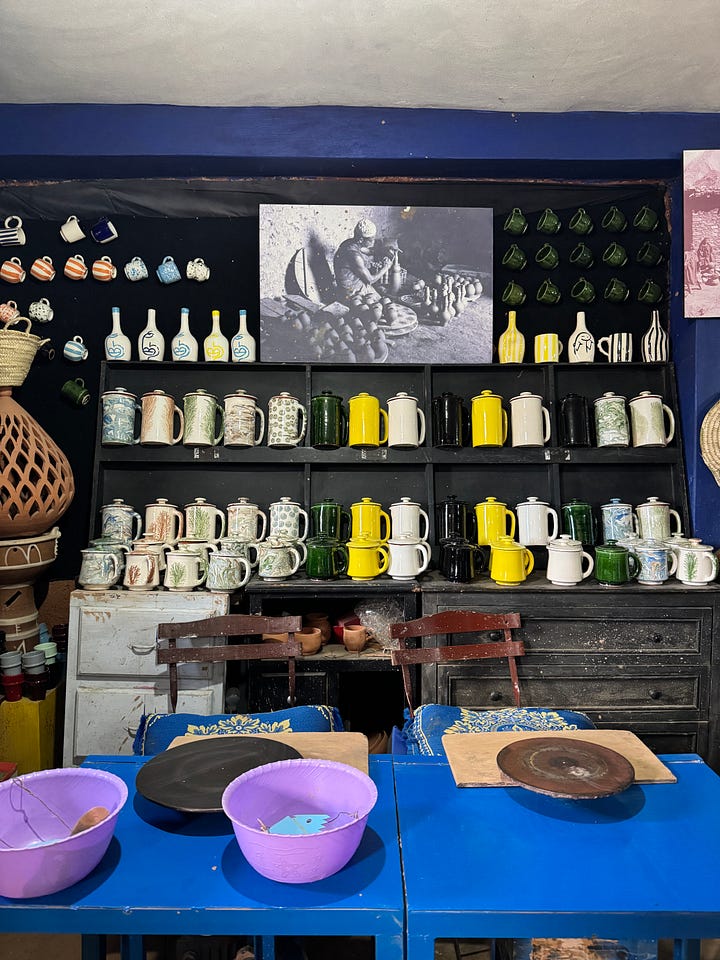
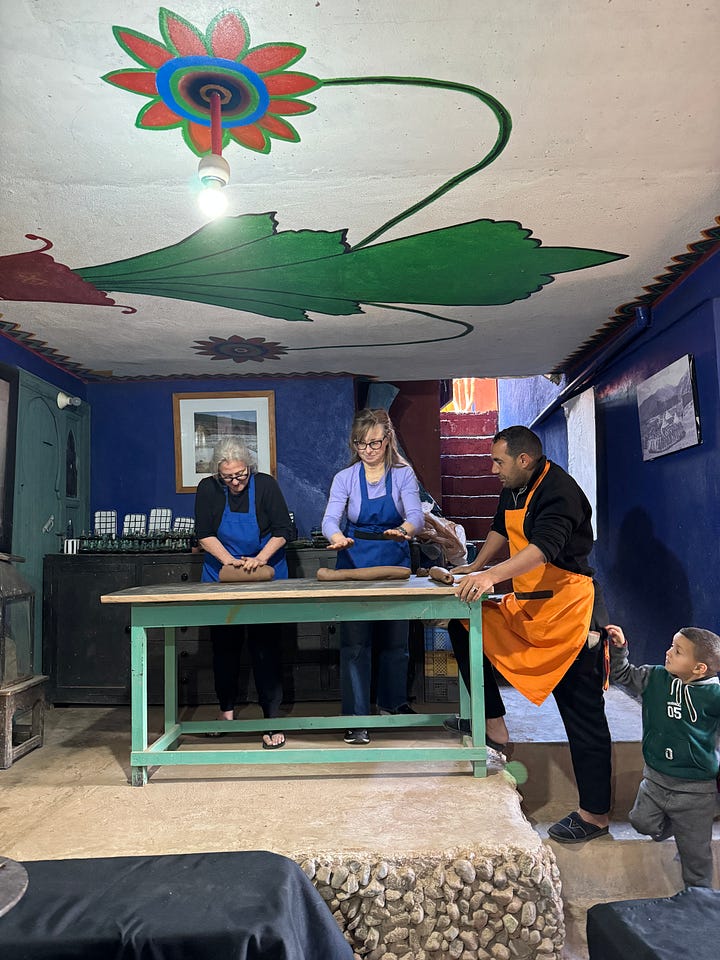

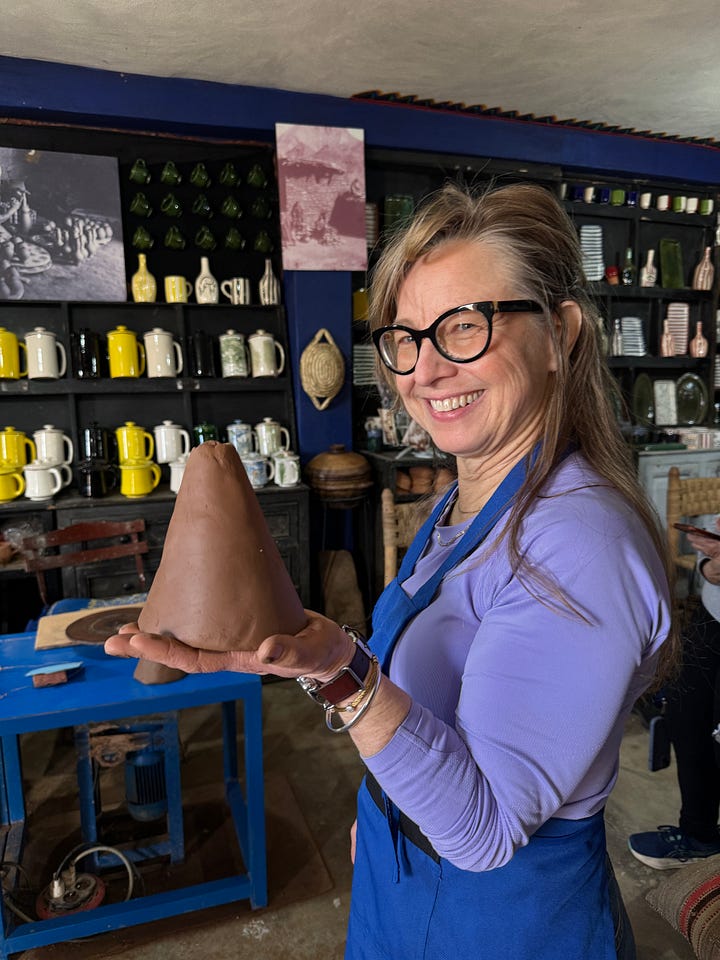
I enjoyed listening and watching two experts share tips, tools, and techniques. I had to remind myself that it was Pam’s first time using the wheel. She’s a natural.

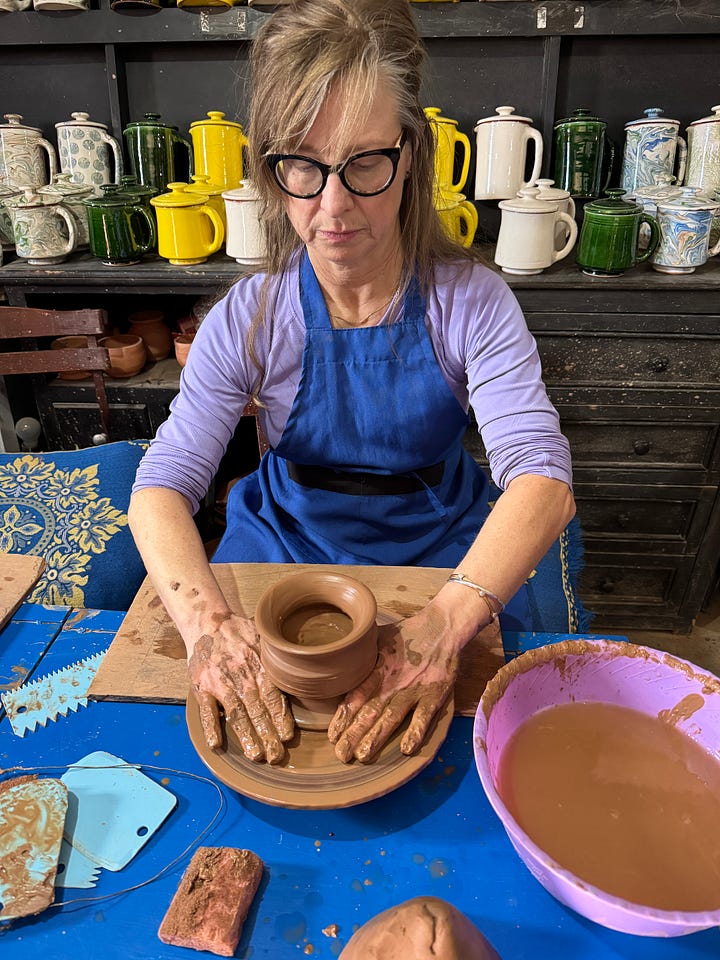
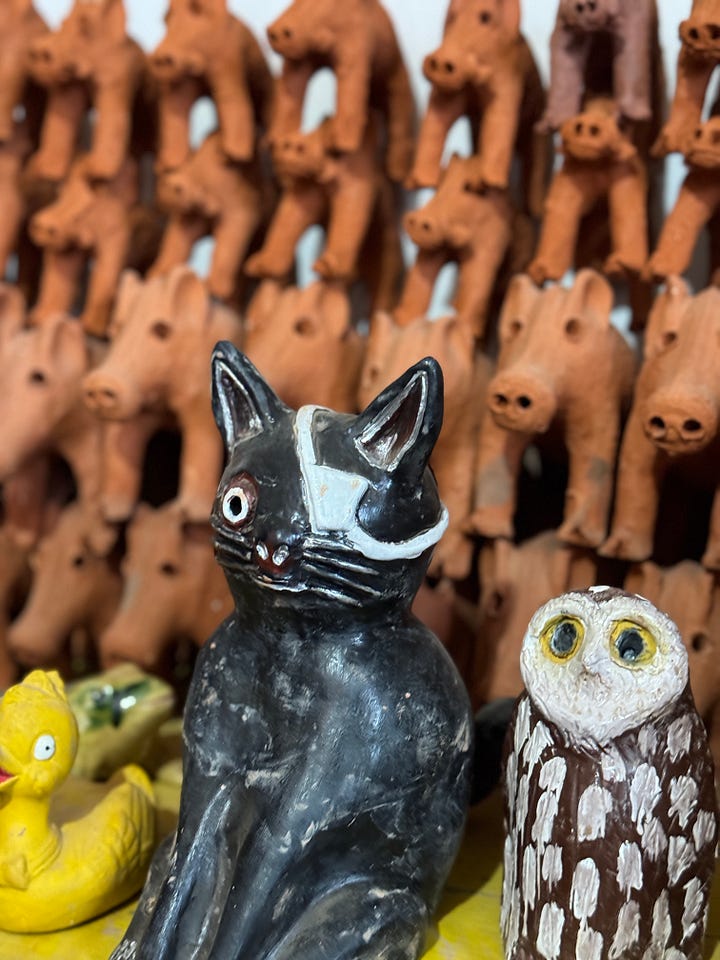
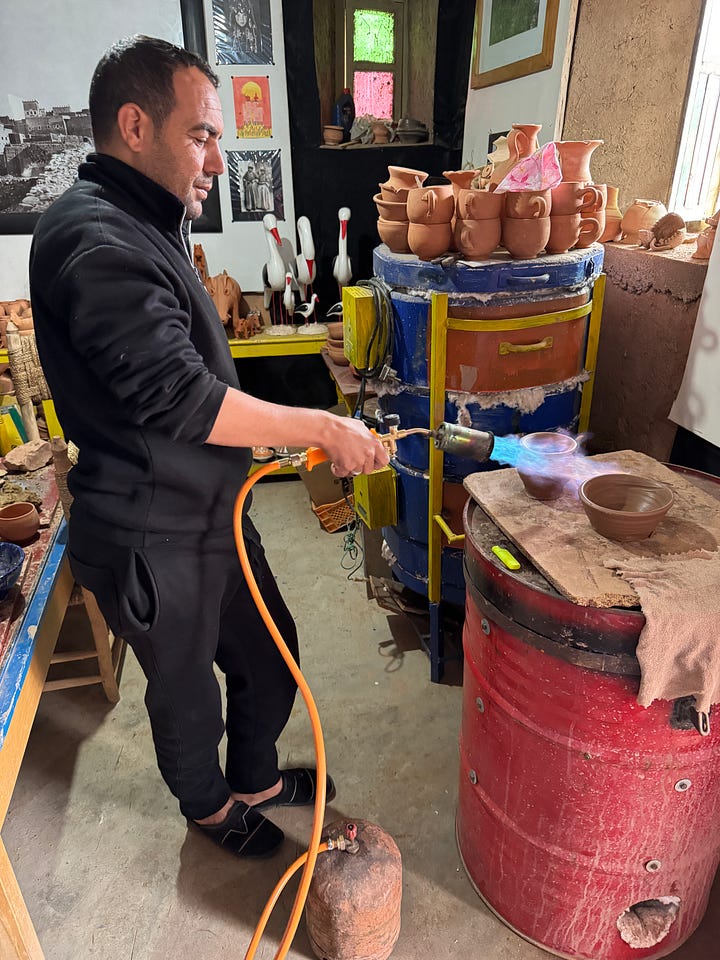
Khalid even took the time to dry Pam’s pot so she could take it home to finish!
Our tour ended with Khalid showing us the larger kilns his family used.

Nestled in the northern part of Marrakech’s Medina is where we spent one of my favorite afternoons with Zawyaty. Zawyaty is a community space where local youth can gather to meet with artisans to work on projects. It’s a combination of education and creation committed to the preservation of local traditions. Group workshops on leatherwork, zellige tile, and brass are offered to visitors to fund their mission of keeping classes free for local children.
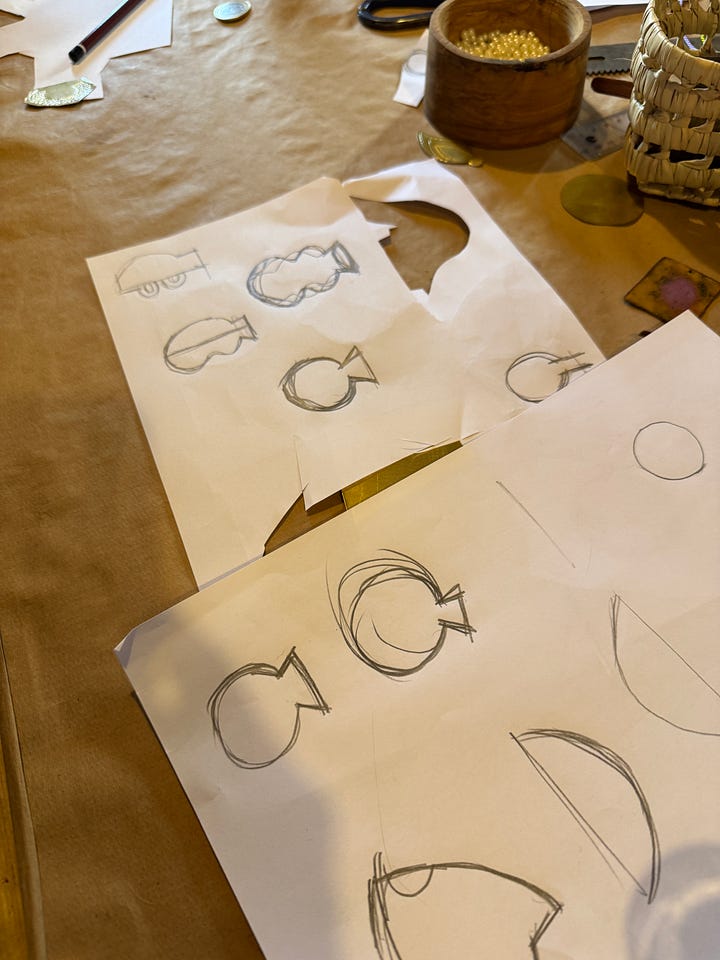

We all agreed that chiseling our shapes out with the chasing tools gave a HUGE appreciation to the many brass and metal items for sale in the souks.

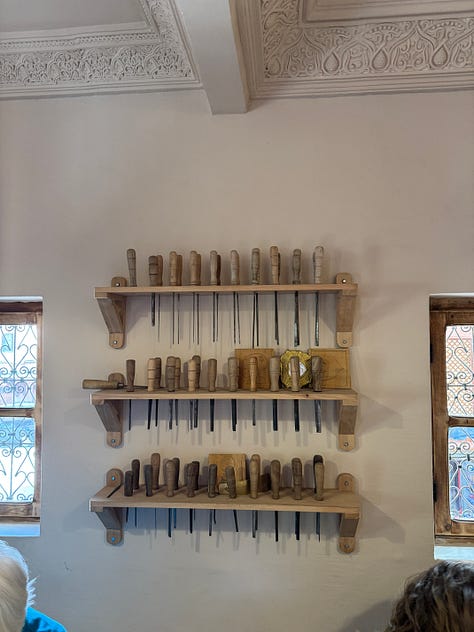
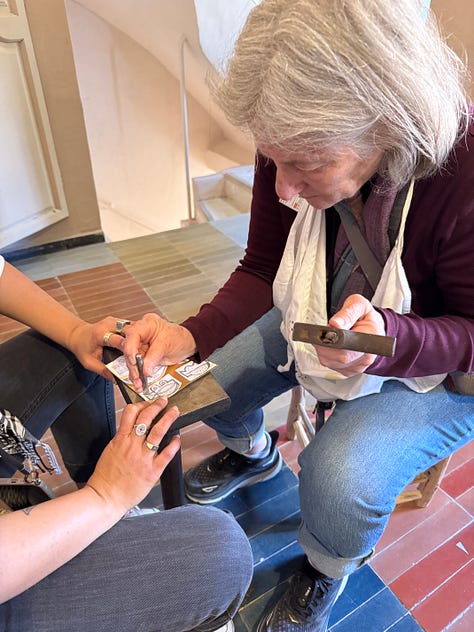

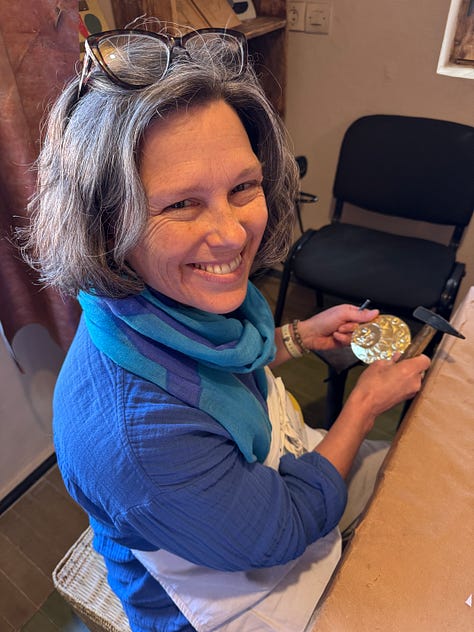
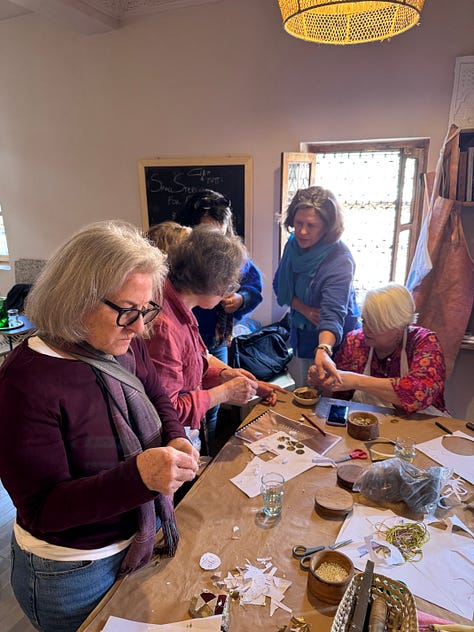
Pam, inspired by Marimetko, designed earrings for herself and her daughter. Leslye continued with her Miriam vessels and made beautiful brass renditions. Christina opted for a technical wall hanging. I used inspiration from the ironwork of the metal doors to design a pair of earrings.
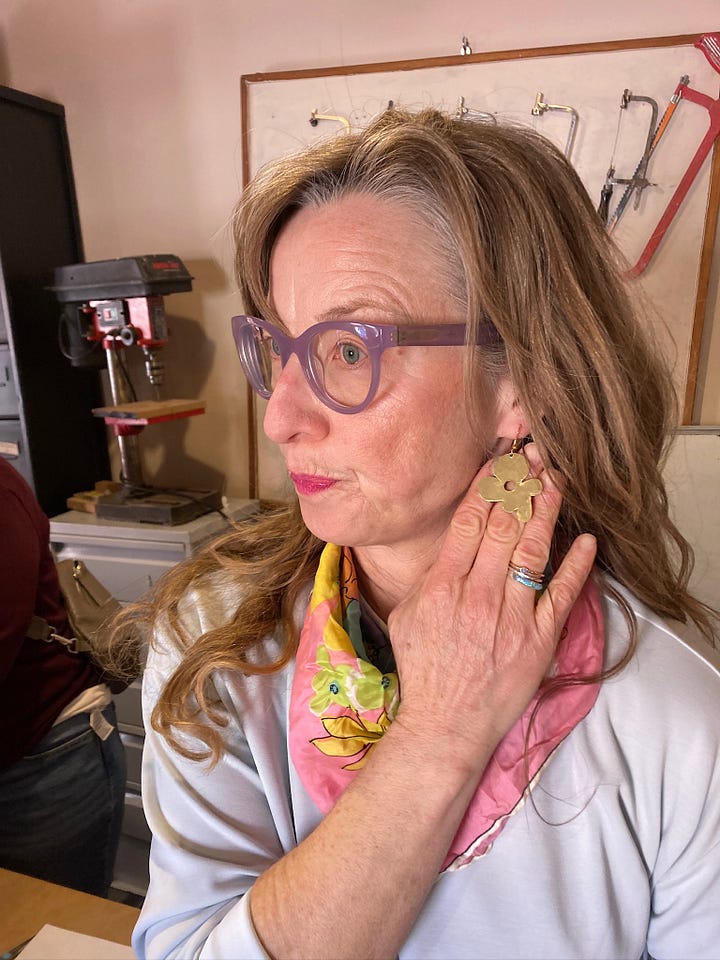
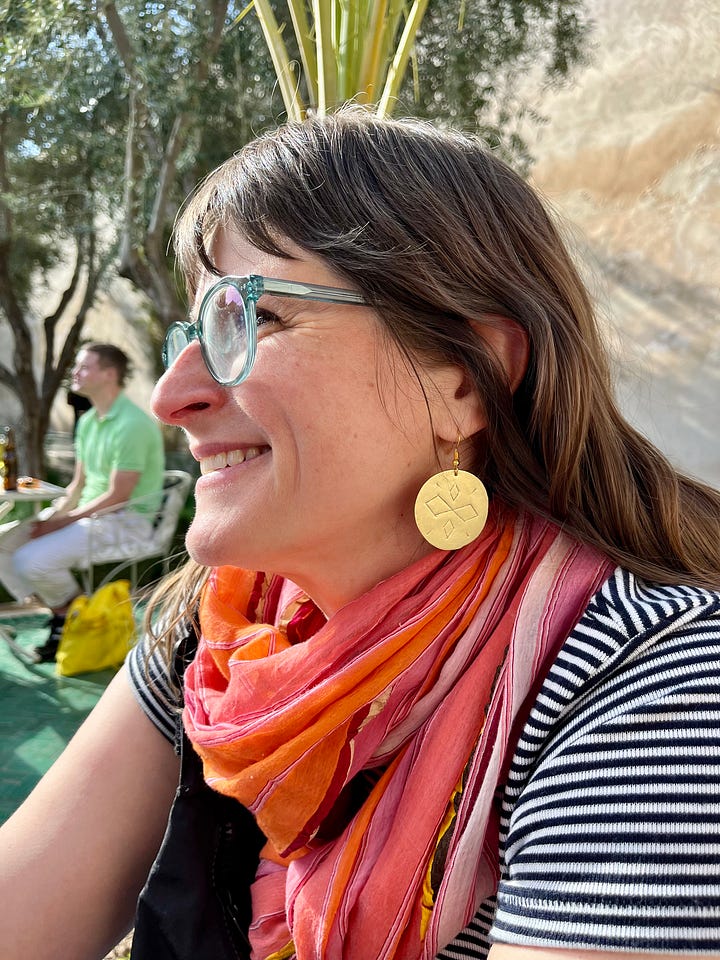
Working with a local artisan and the expertise of Burcin, one of the directors, we carved away for the afternoon.
Once finished, Zawyaty spoiled us even more with a delicious home-cooked meal on their terrace. Jill enjoyed the view so much that she recreated it in watercolor.
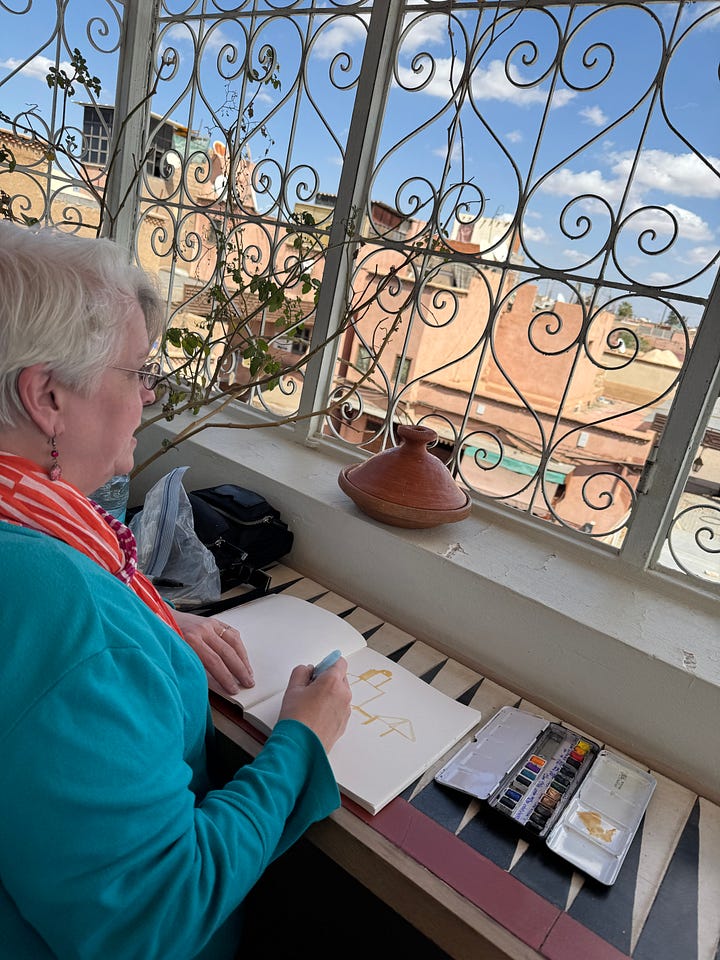

Zawyaty is also expanding to open boutiques featuring goods made in their workshops and renovating beautiful spaces covered in colorful tile to expand their offerings. If you’re in Marrakech, stop by to see what they’re up to. Better yet, schedule a class. Remember, they serve lunch too - they truly do it all.
Our next class came in the form of cooking with the Amal Women’s Center
Amal Women’s Center works to increase the number of women in the Moroccan workforce (currently only 25%!) by providing culinary training in a professional setting. They also have a coffee cart on site, run by deaf students, that served the most delicious cappuccinos while waiting for your tagines to cook. Amal has also done extensive work for victims of the devastating 2023 earthquake.
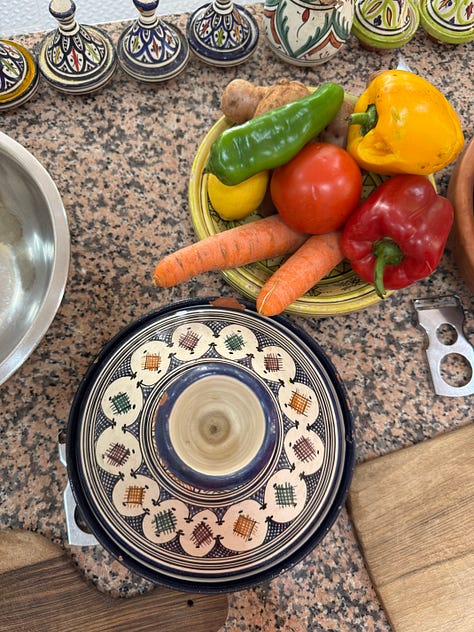
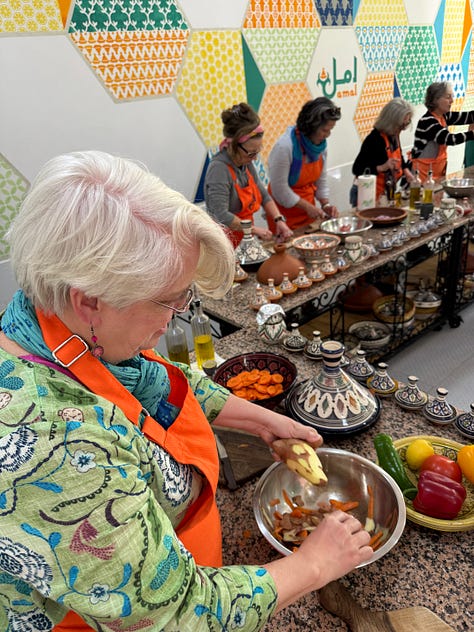
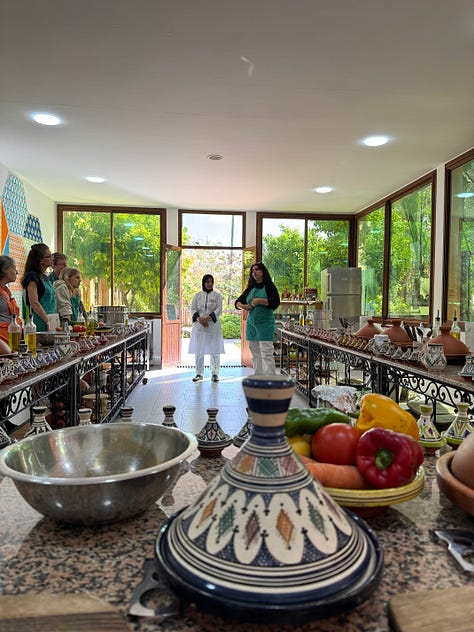
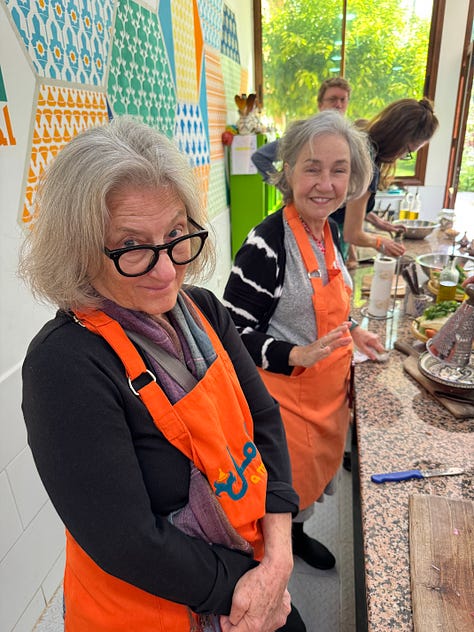
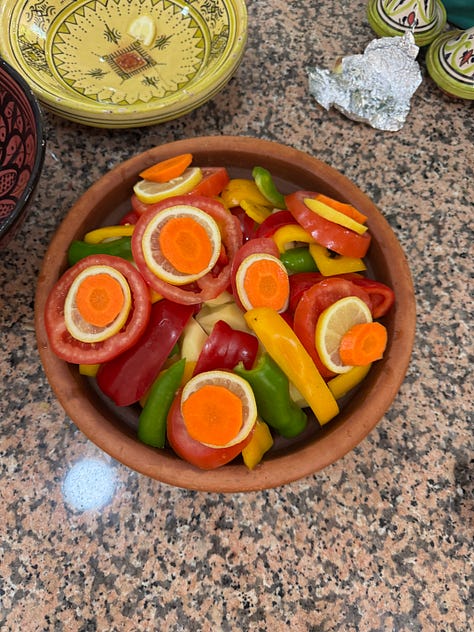
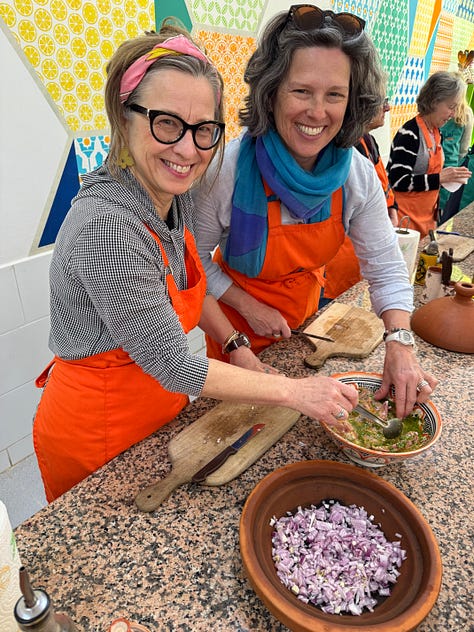
For the cooking class, in teams of two, we tackled veggie couscous, fish tagine, and chicken tagine with lemon and preserved olives. There is no shortcut for making tagine (a tagine is the earthenware pot used to cook and can be any combination of ingredients).
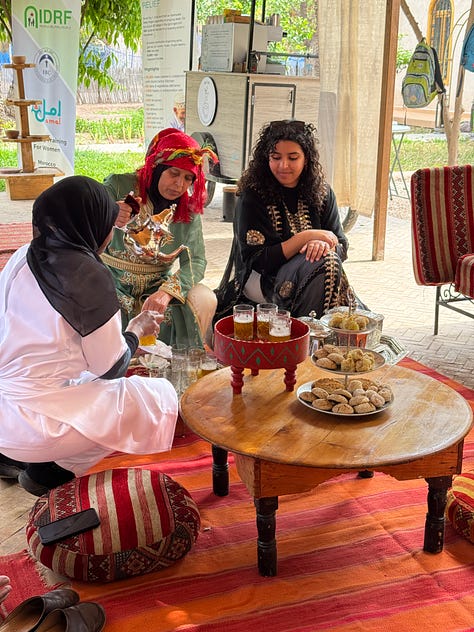

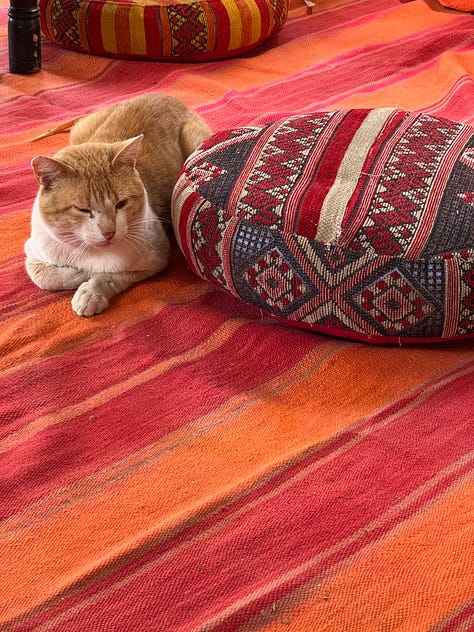
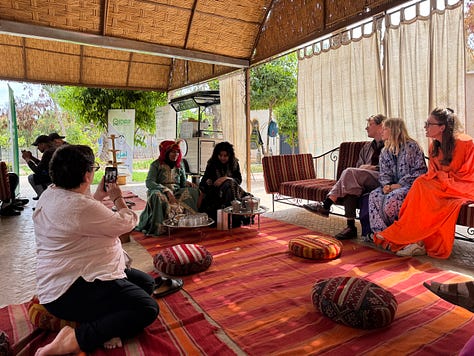
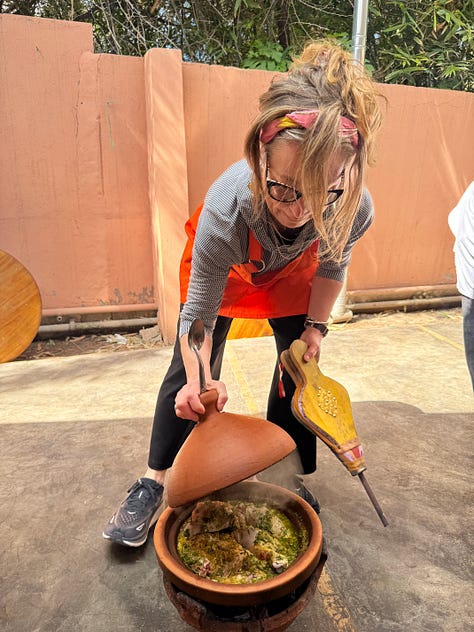
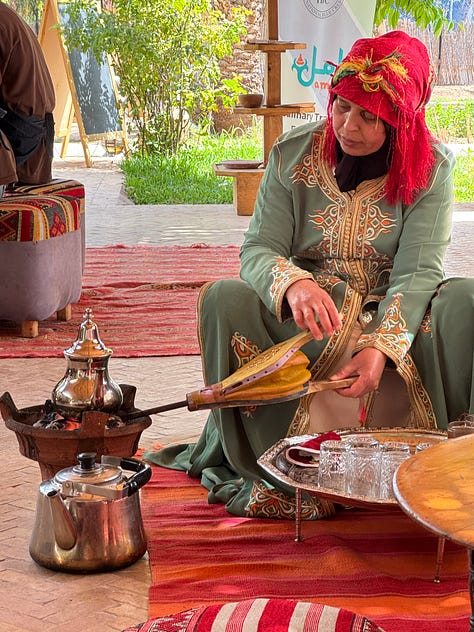
While our dishes cooked, we fanned the flames and enjoyed a traditional tea ceremony. It was orange blossom season, and not only was the scent from the ornamental orange trees other-worldly, but the orange blossoms were also mind-blowingly delicious in the mint tea.
We shared our meal with a lovely British woman researching to write her book and a family from Switzerland. Another enriching part of travel is the people you meet along the way.
The last scheduled class (Jill made every day a class!) was with Zwak Painting, located in the heart of Marrakech’s old city. Toufik and Abdul demonstrated how to use chalk to create a stencil outline and it’s freehand from there. The brushes are made of donkey hair and demand a particular balancing of your hand and the brush to achieve control when painting the lines.
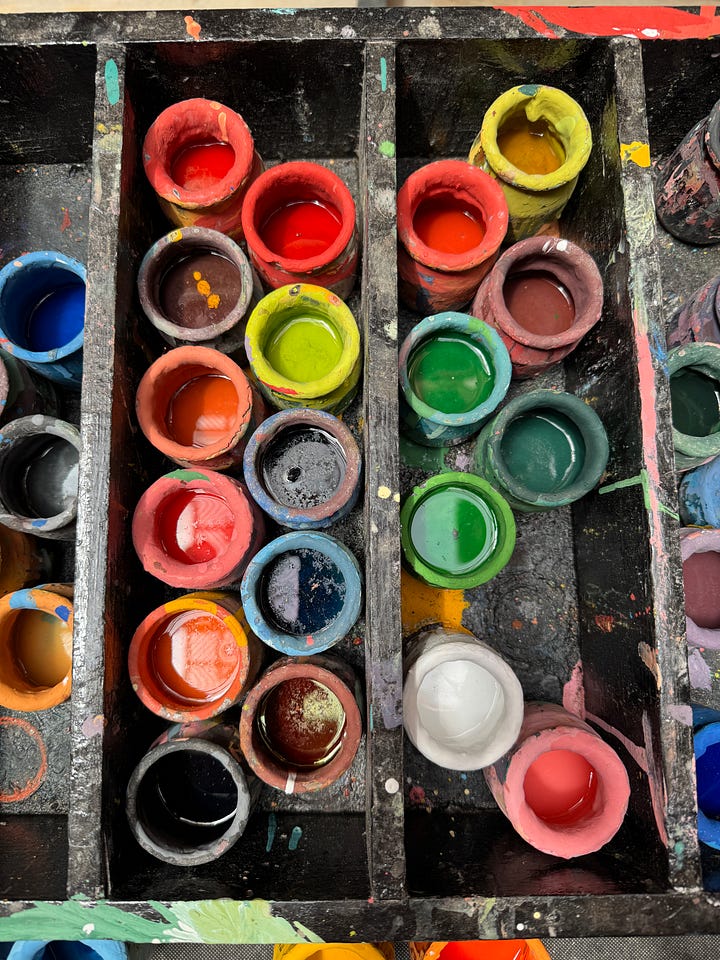
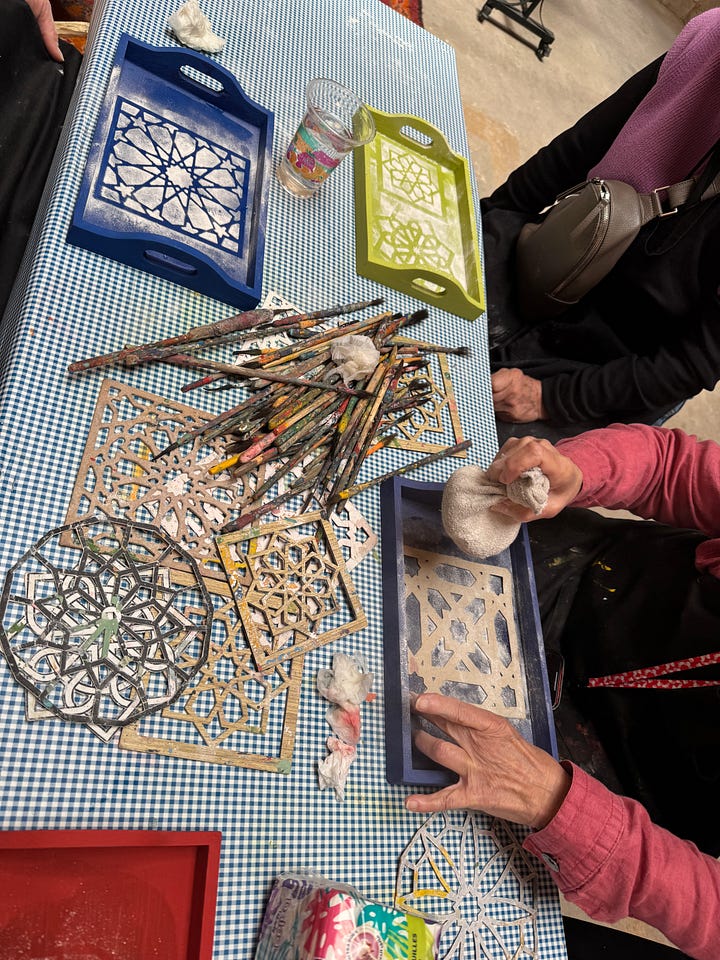
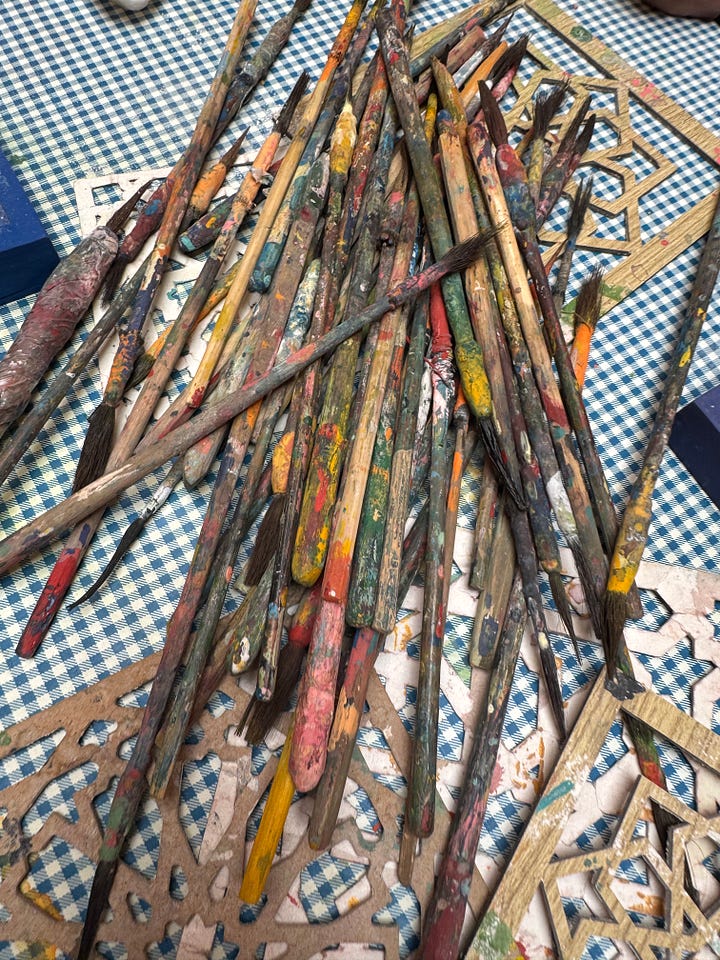
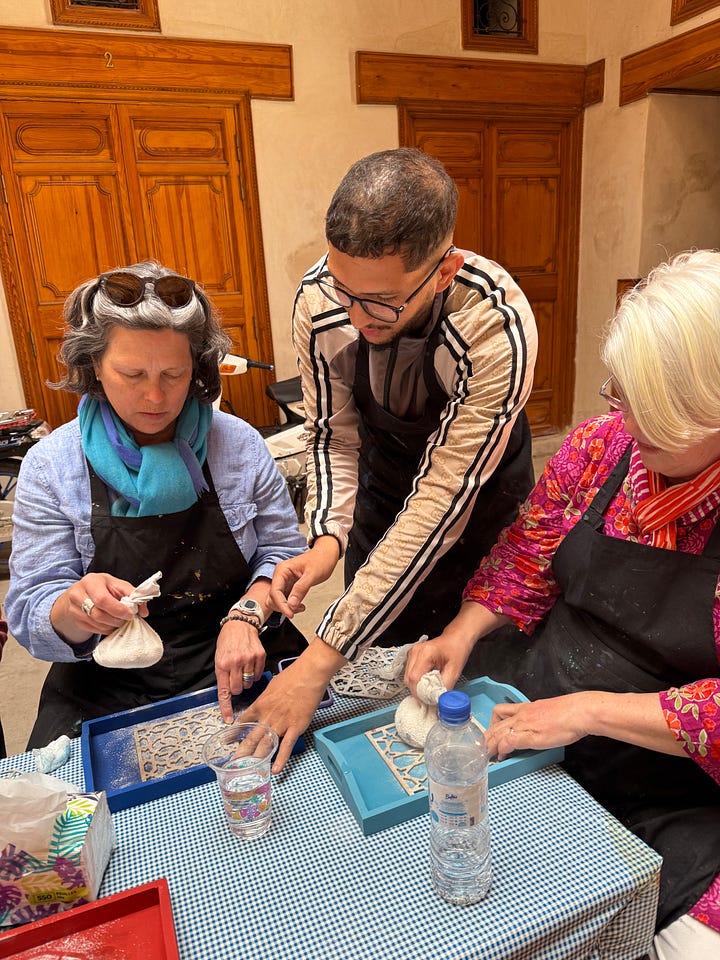
First, we chose a pre-painted, vibrant tray for our background. Next, we devised our color schemes. I took a break from my usual shades of blue and orange and opted for a Red City-inspired palette: red with pink, orange, and yellow.
Painting in the open-air studio was relaxing, save a few moments where I smudged or painted up the sides of my tray. In the end, my tray looked great from afar (think Monet). Up close, it fondly reminded me of those handmade treasures my mother had begrudgingly displayed that I made when I was a kid.
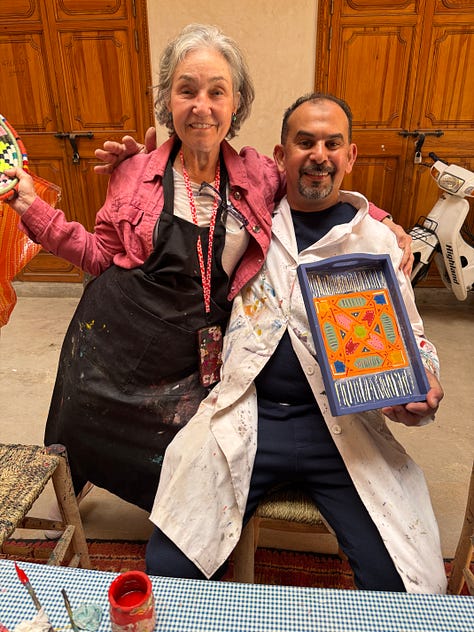
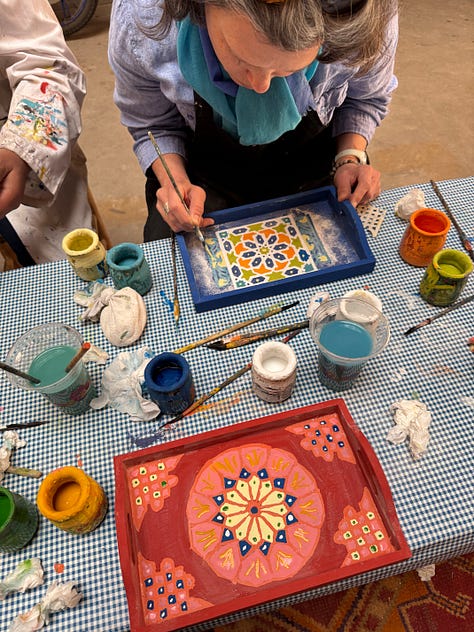
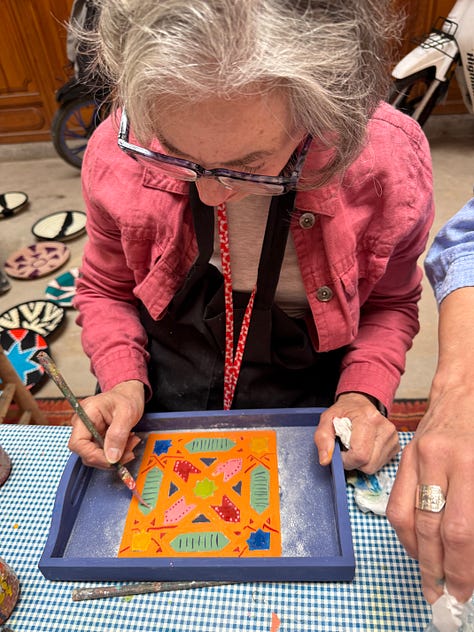
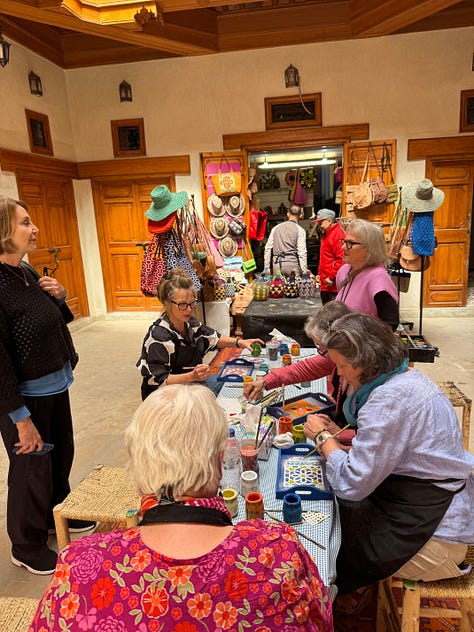
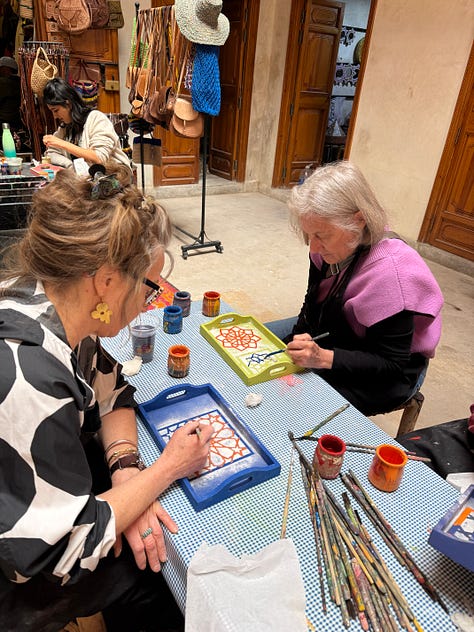
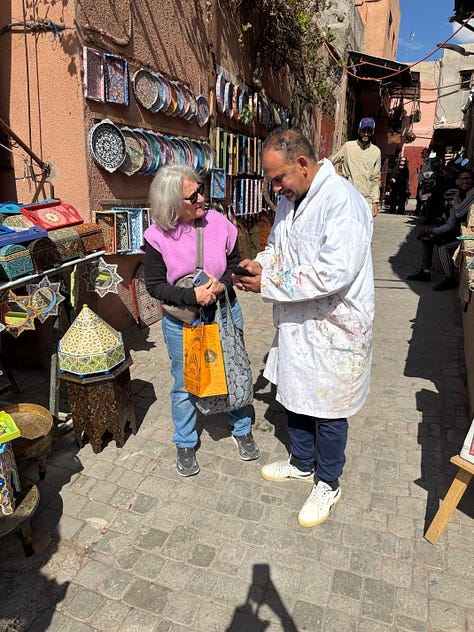
Participating in these classes taught us about local crafts and customs while providing a way to give back to organizations working to improve conditions for women, the deaf, earthquake victims, and the youth of Morocco.
Our participation in the Amal Cooking Class and Zawyaty Brass Metals Workshop directly supports their programming.
If you’d like to contribute to Amal Women’s Center, you can make an online donation here: Donate to Amal Nonprofit
If you’d like to support Zawyaty and their workshops dedicated to the younger generation, Donate to Zawyaty
Thank you for following along,
Natalie
Next up: Furry Friends in Essaouira



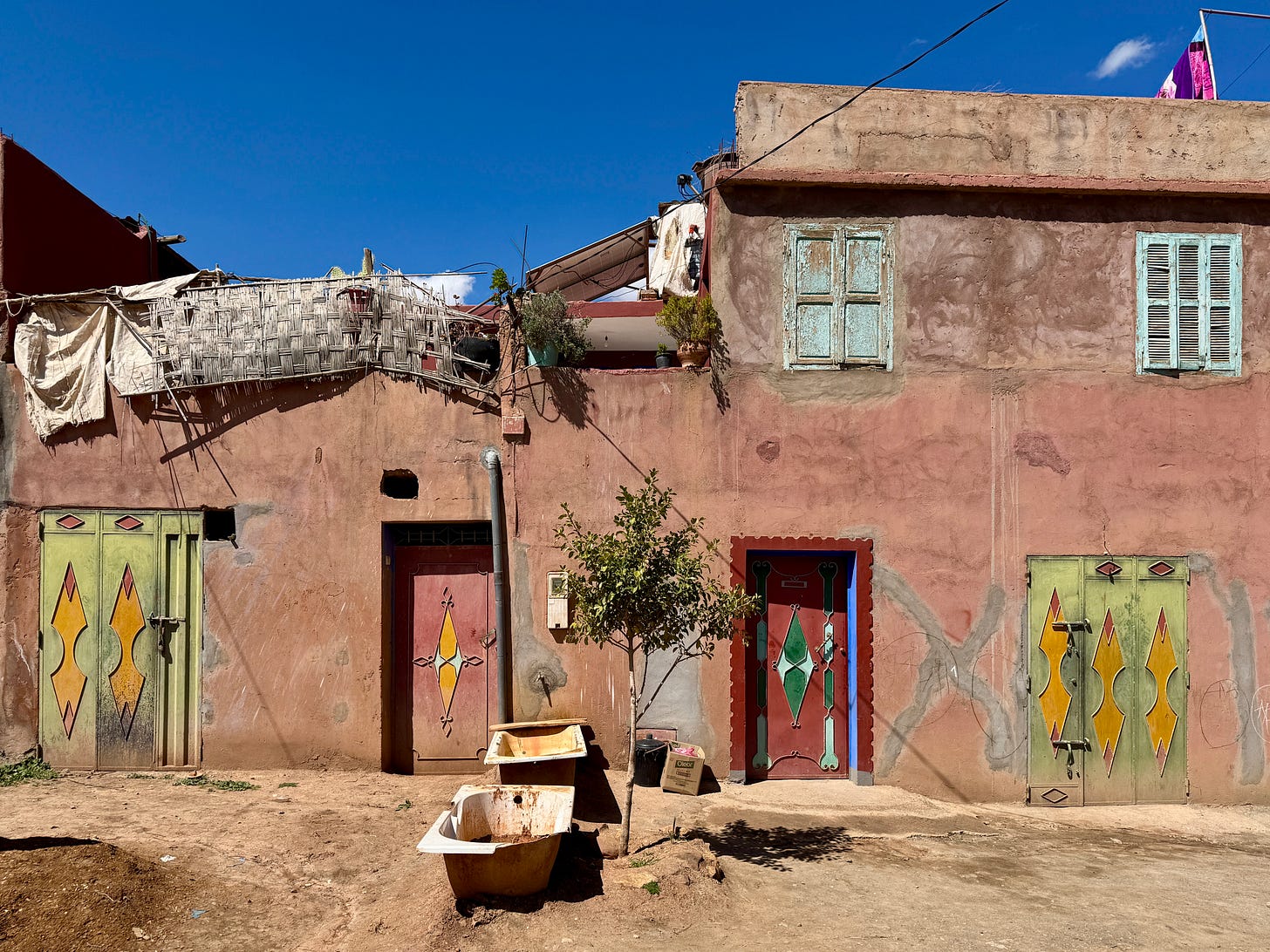
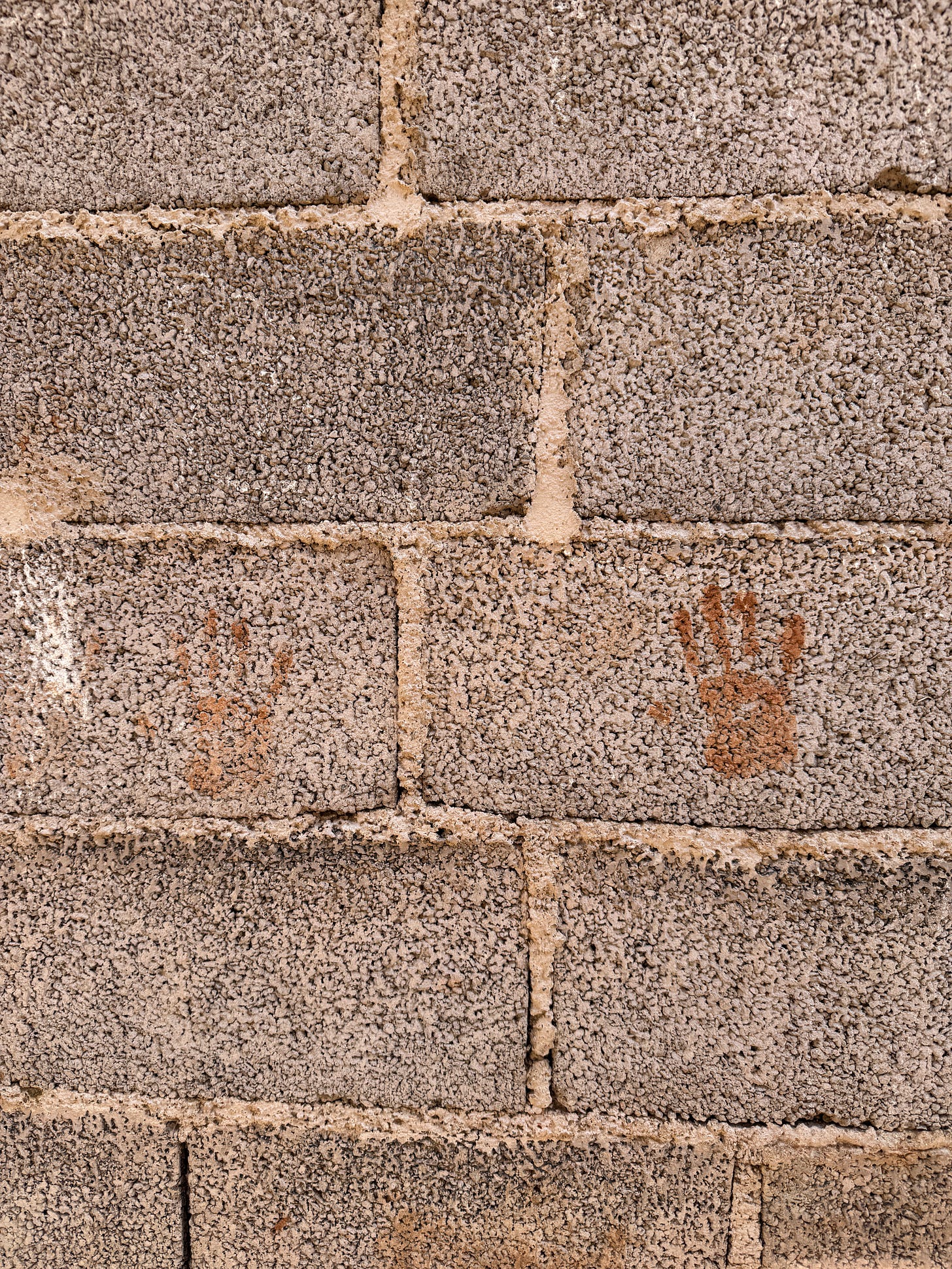
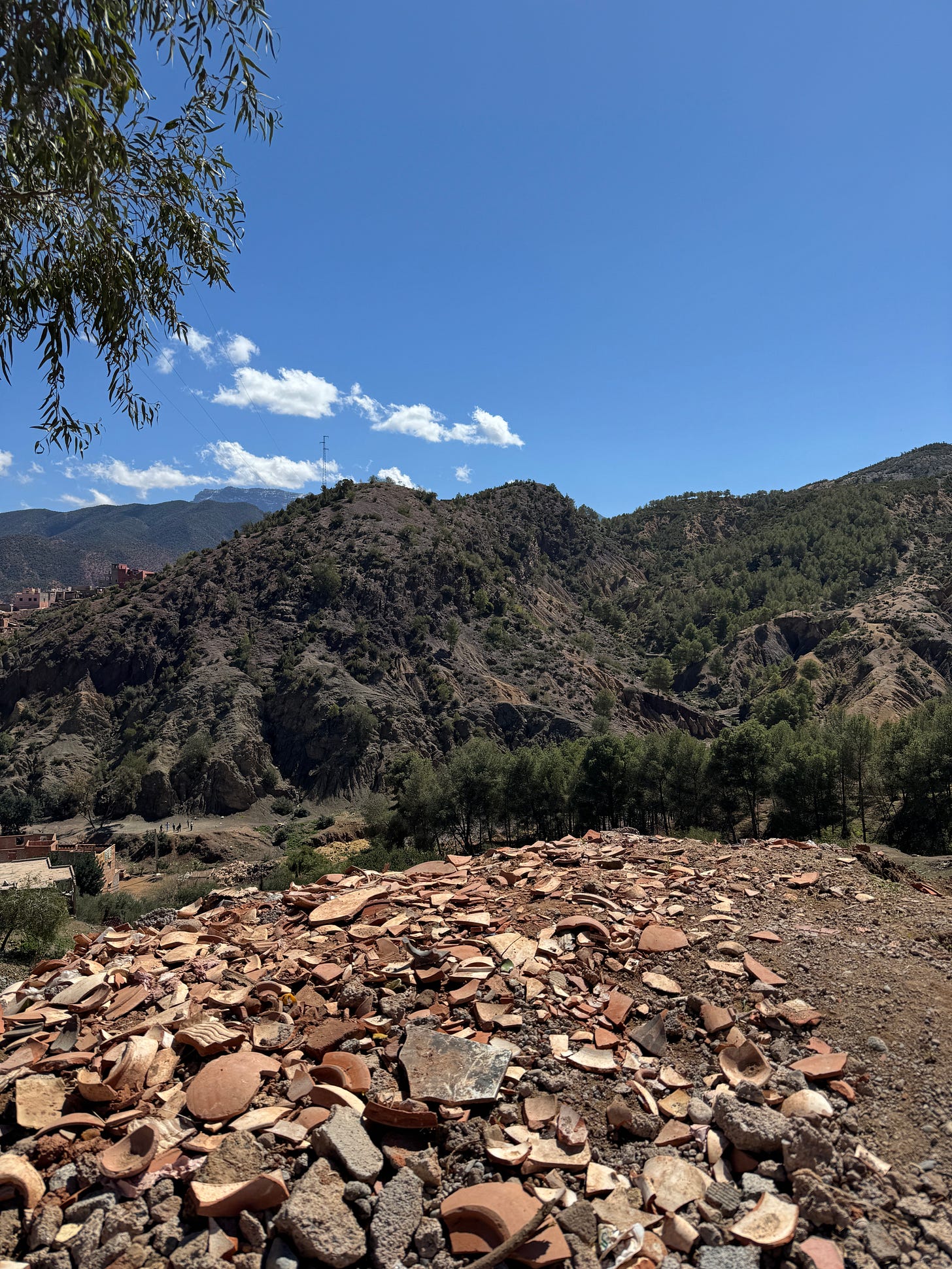
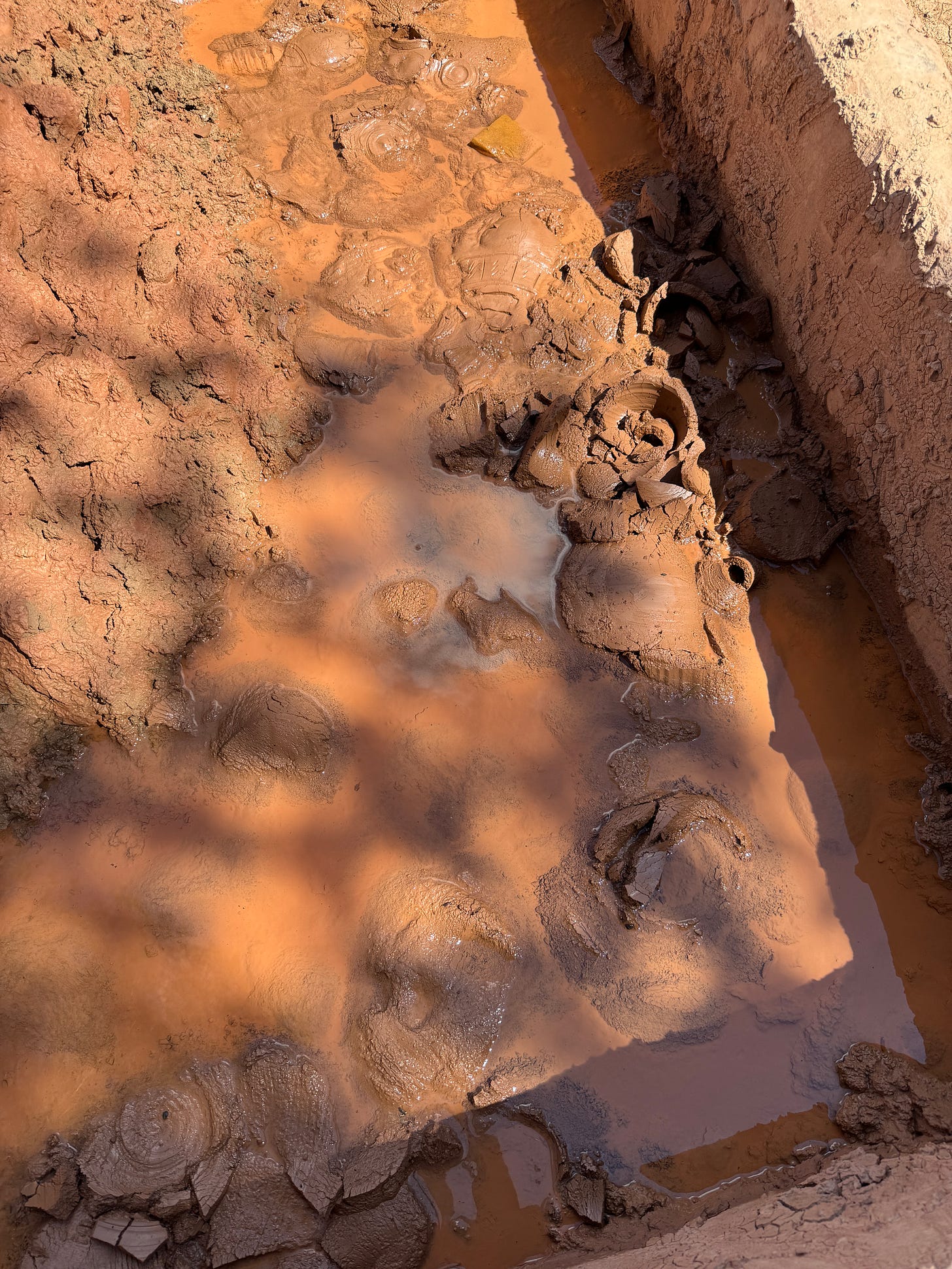
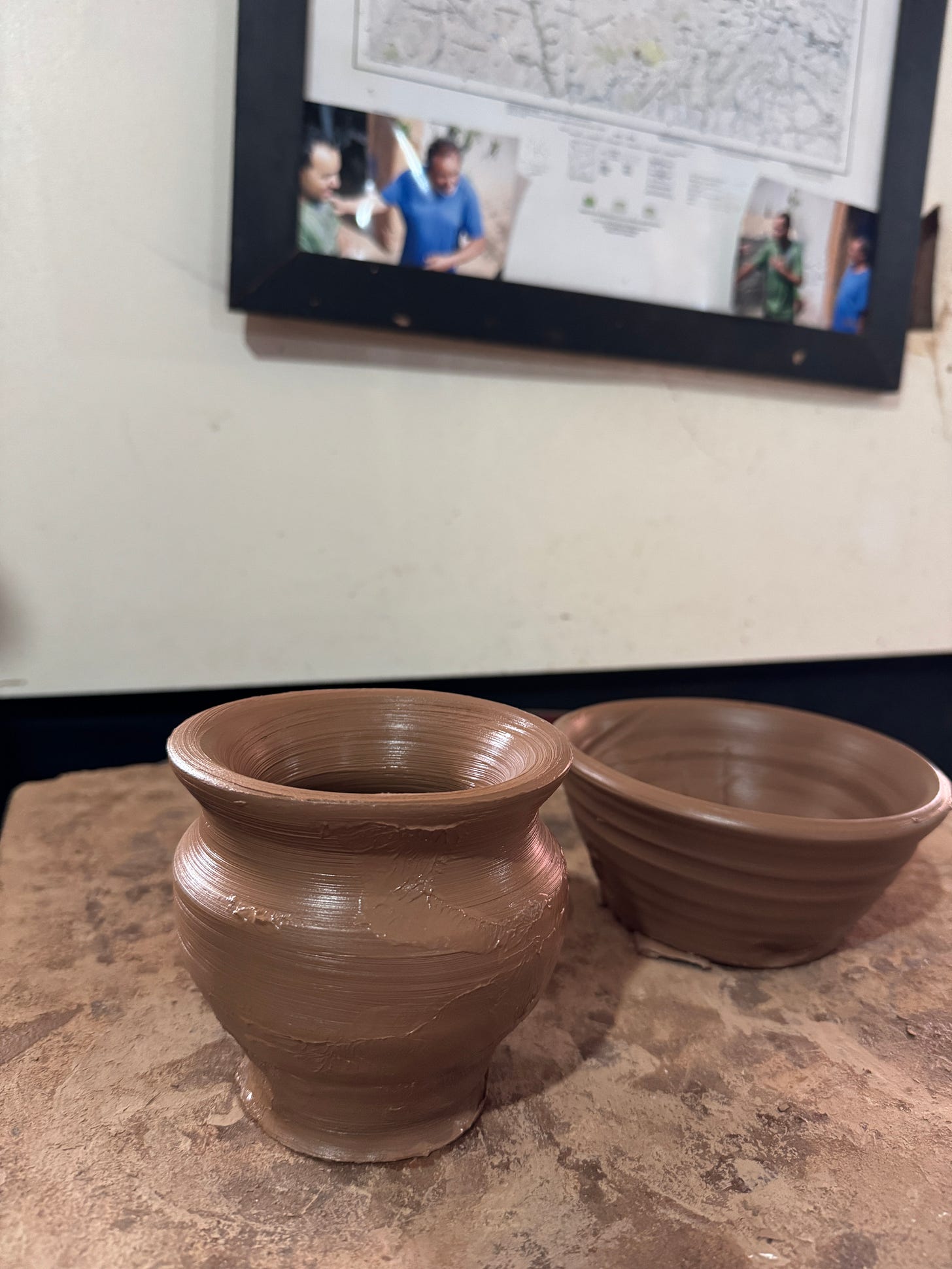
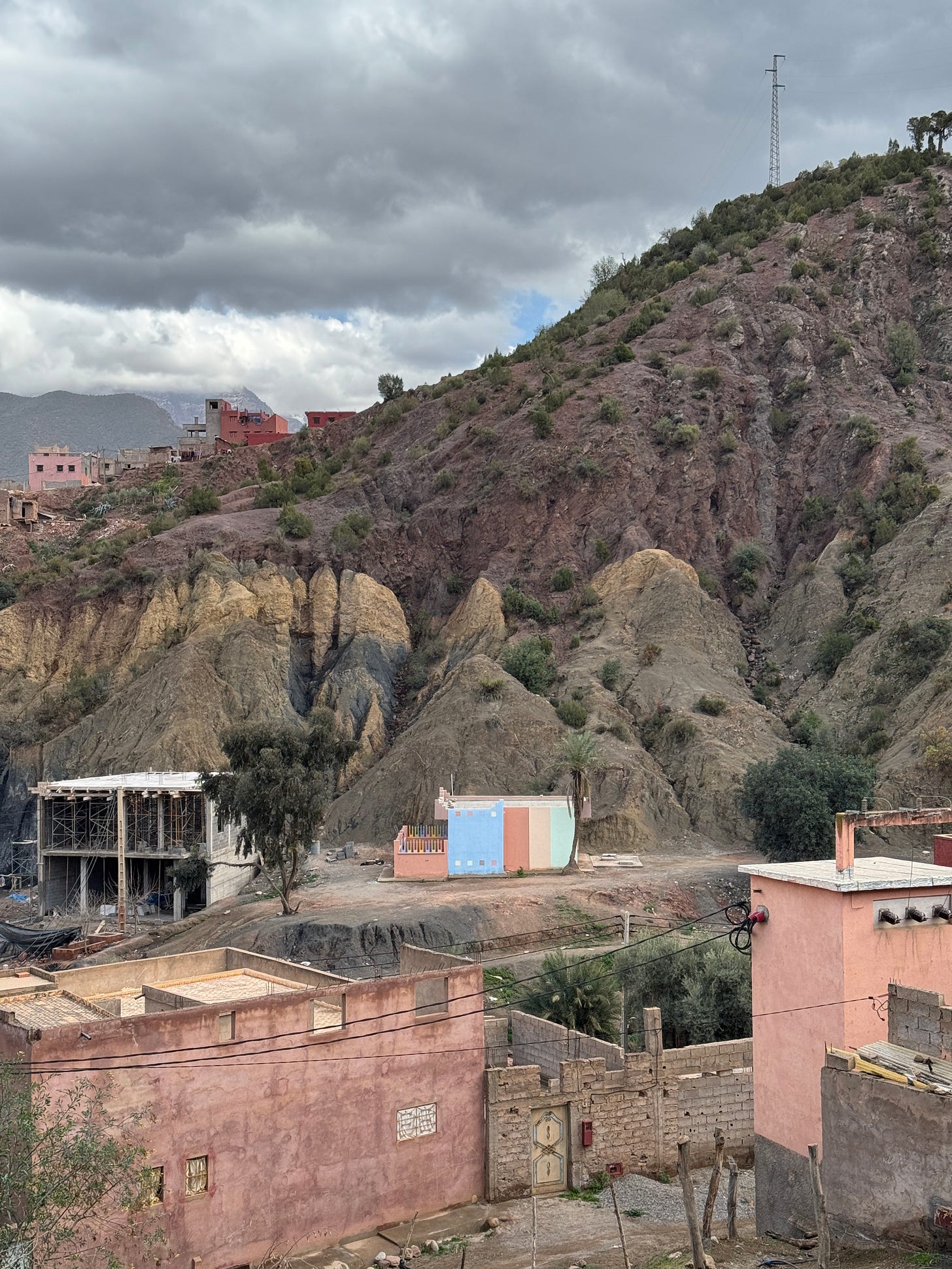
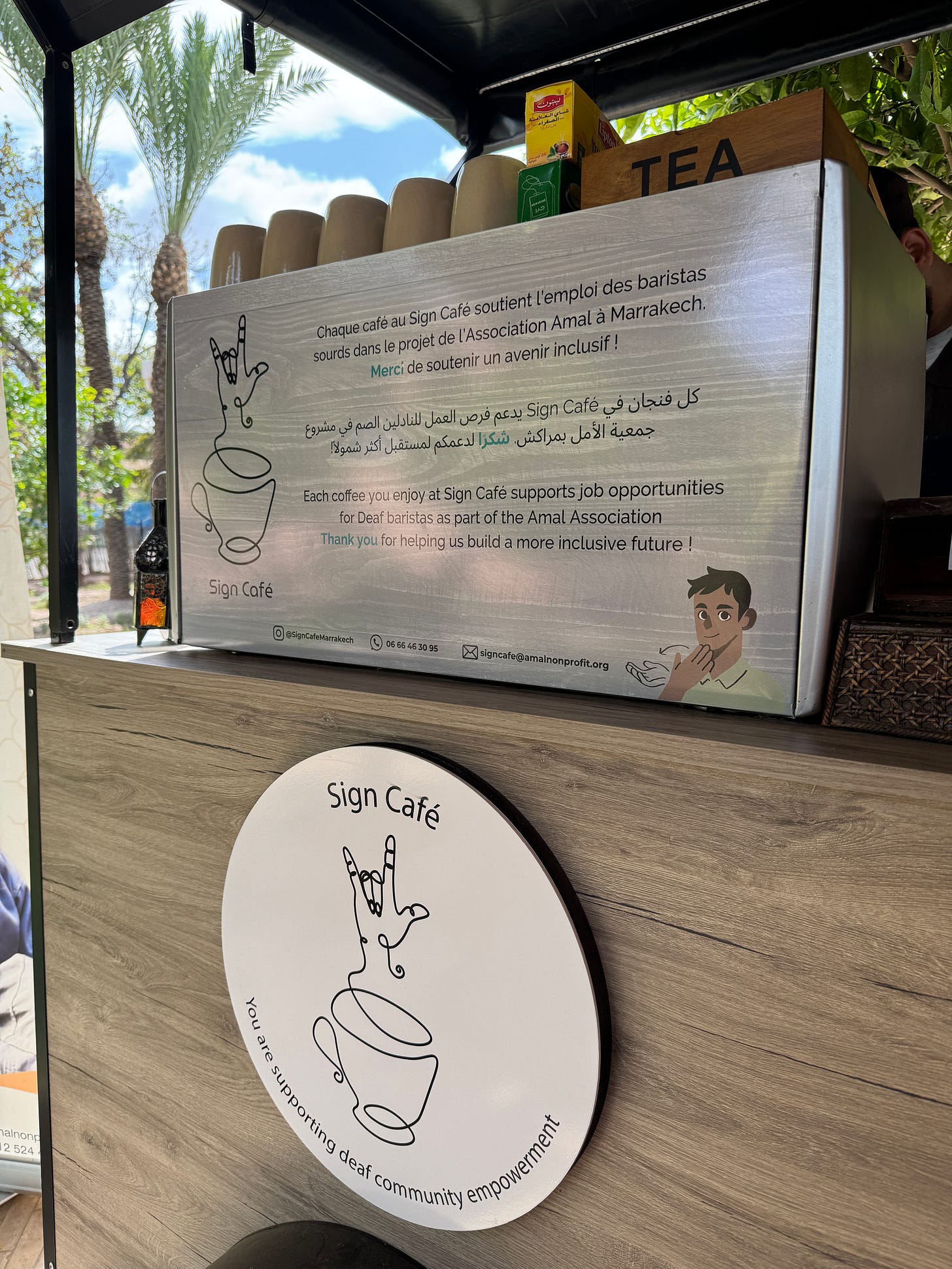
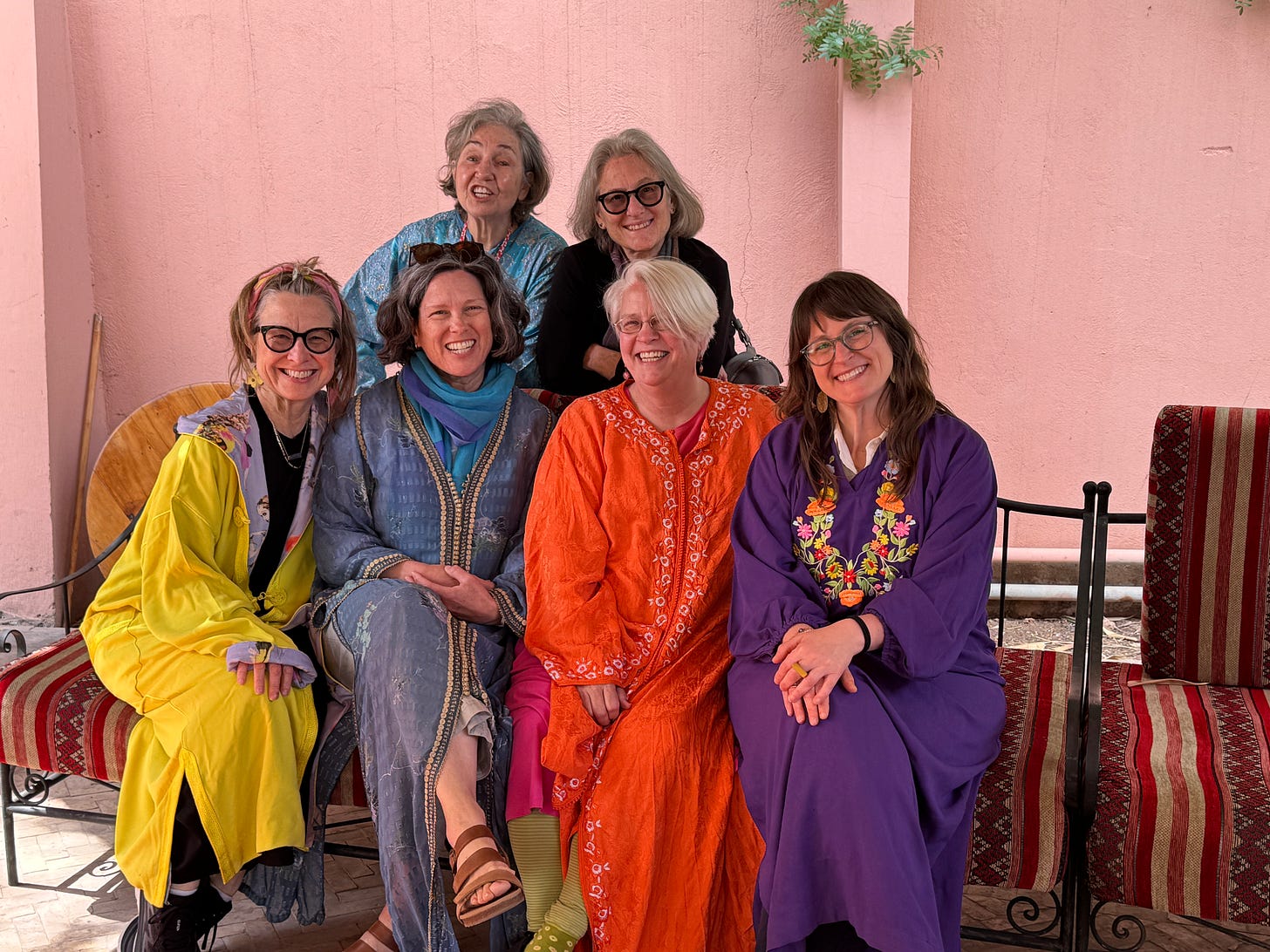
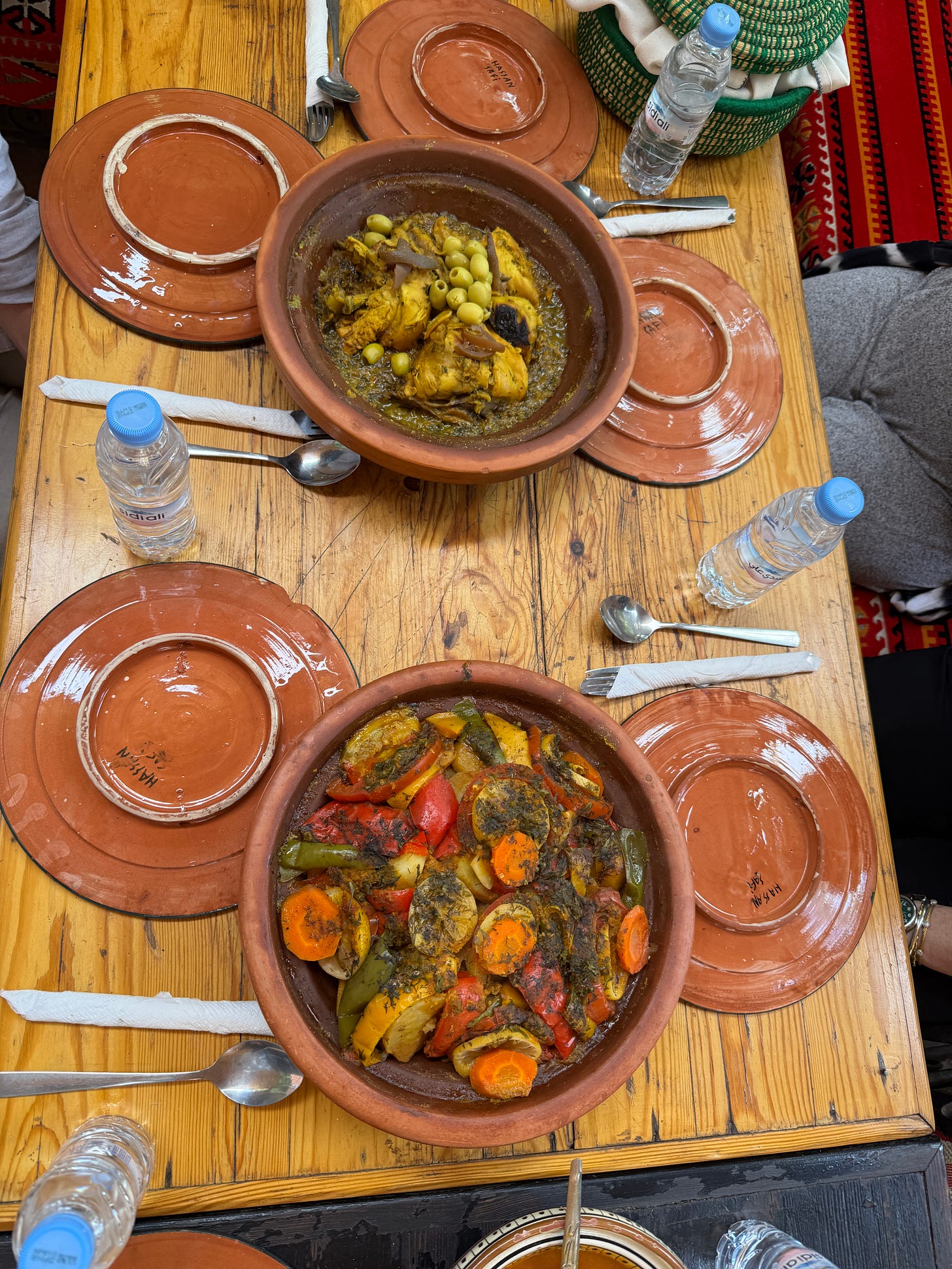
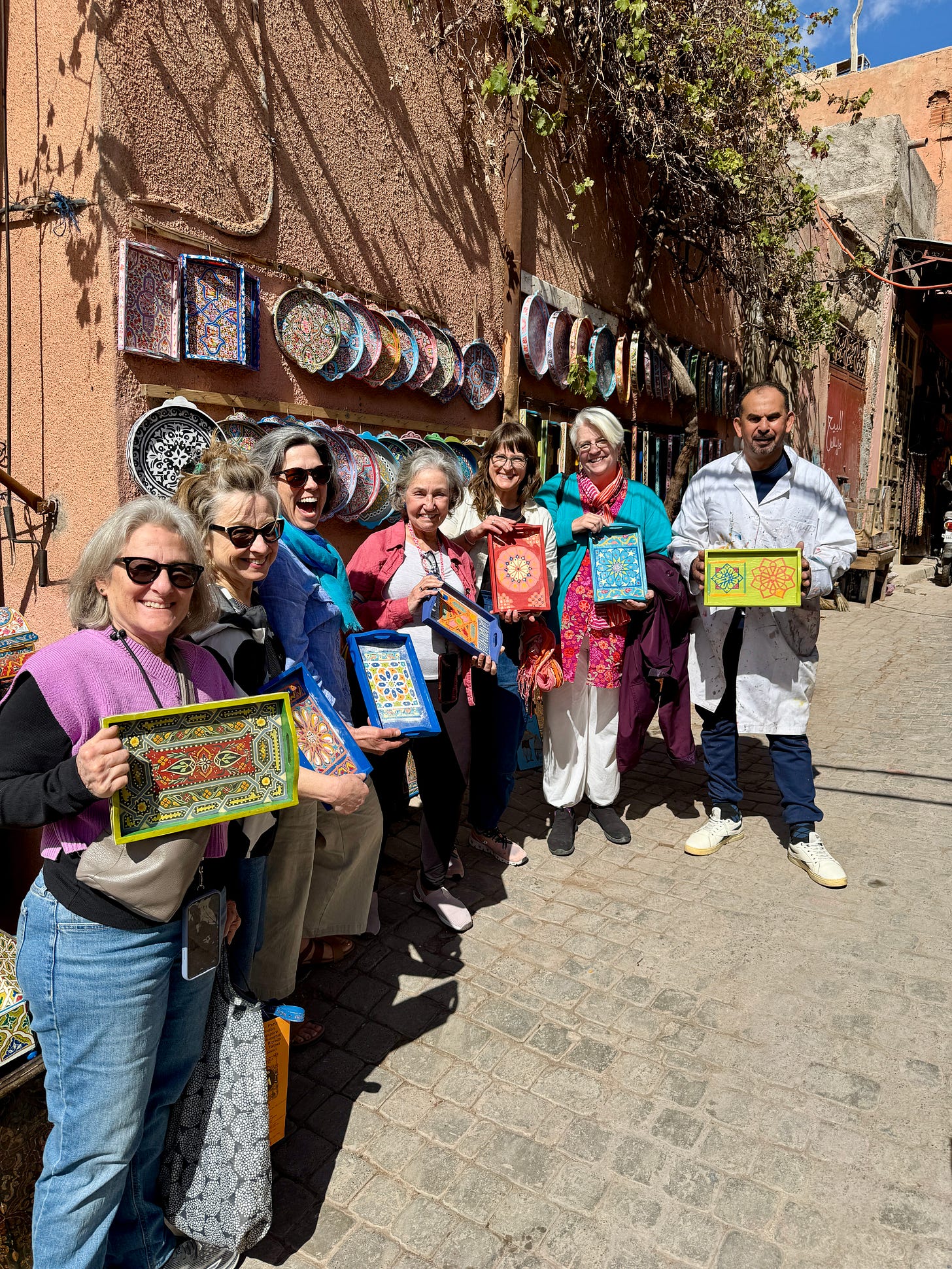
😊